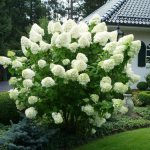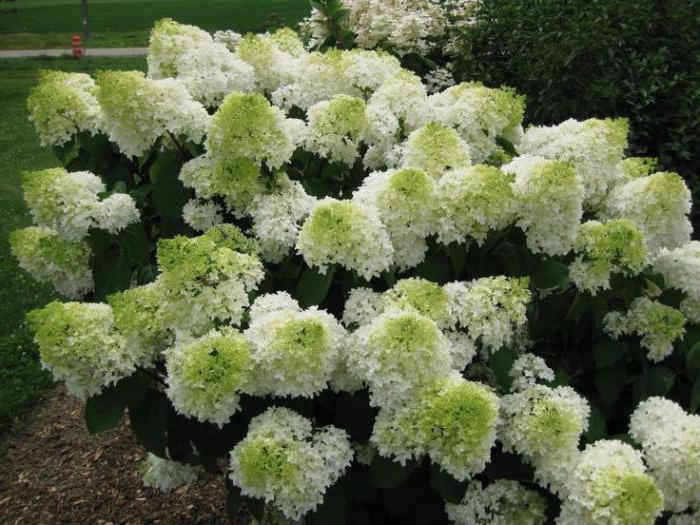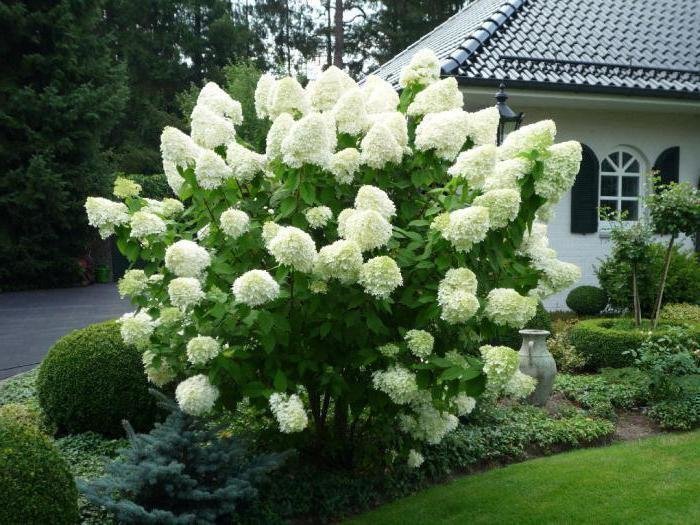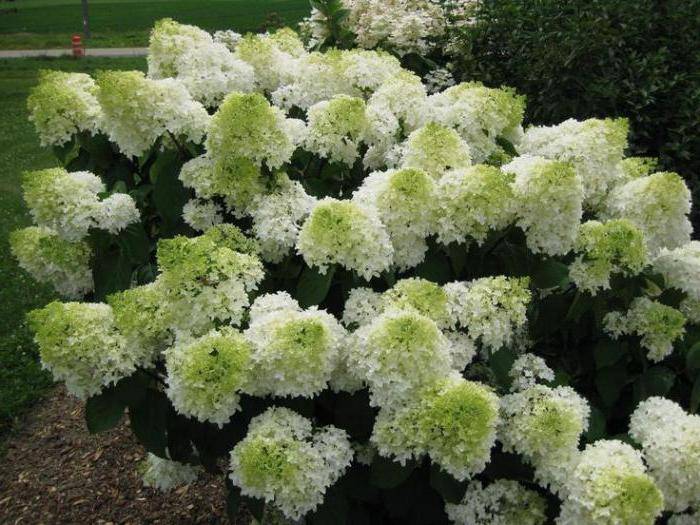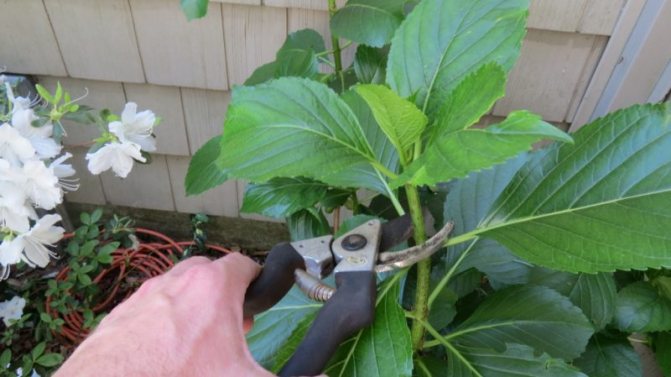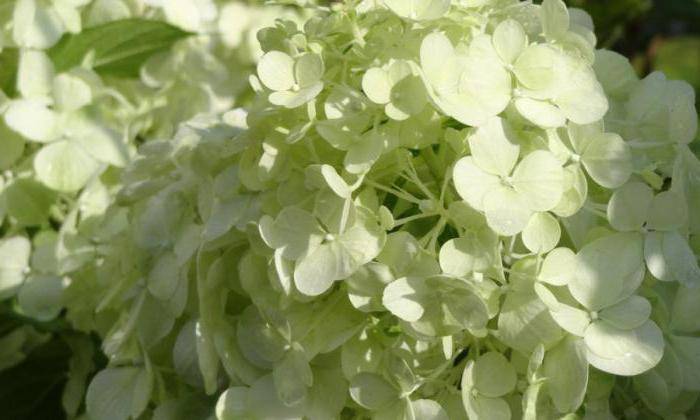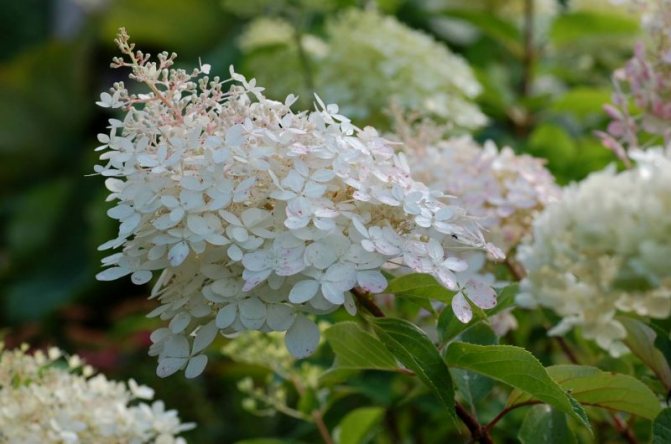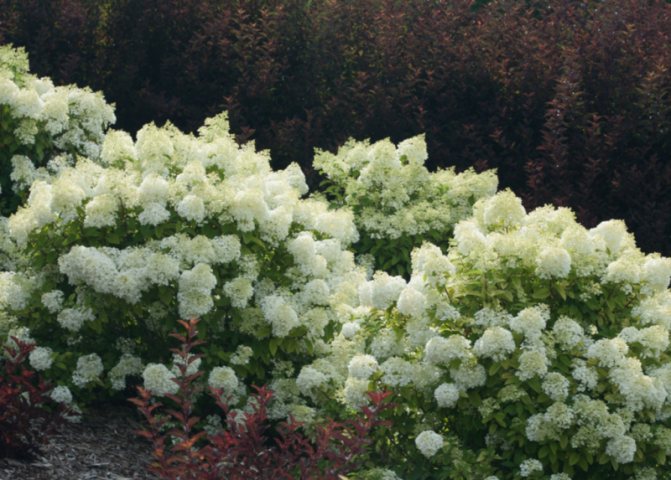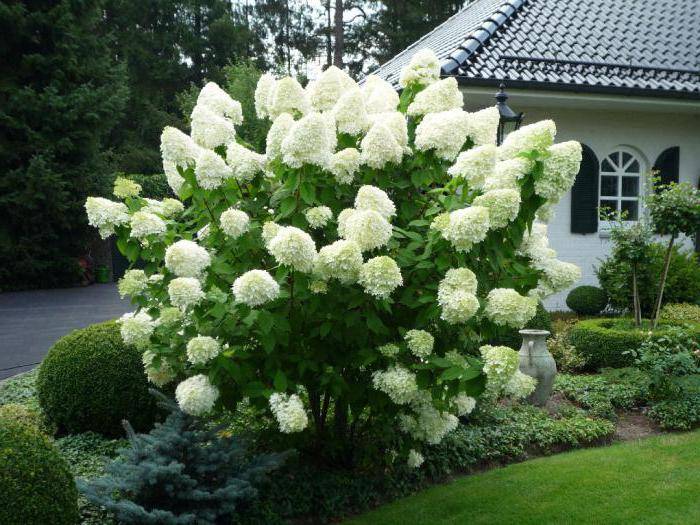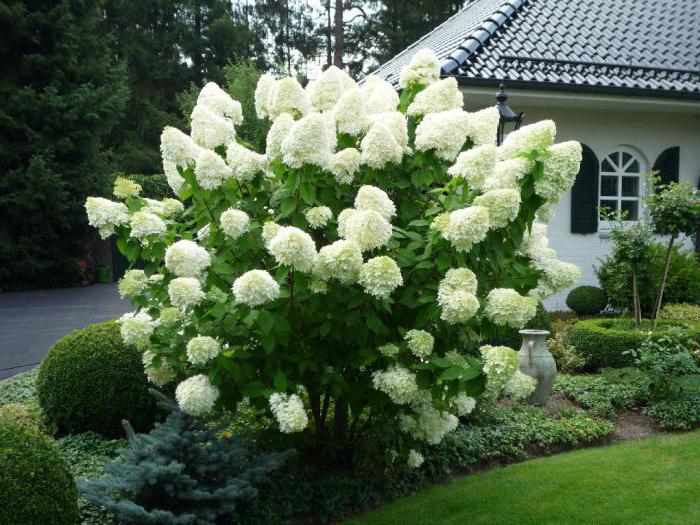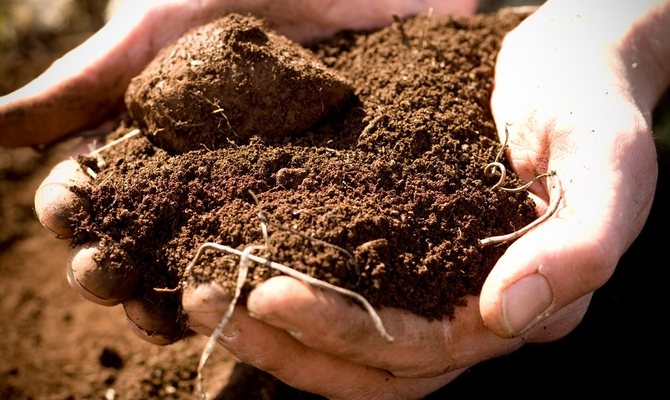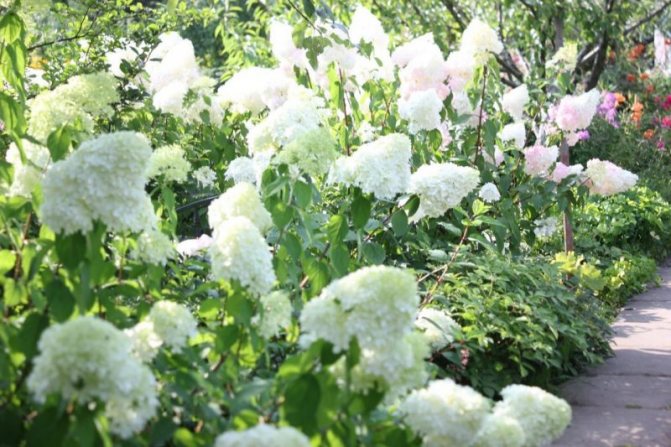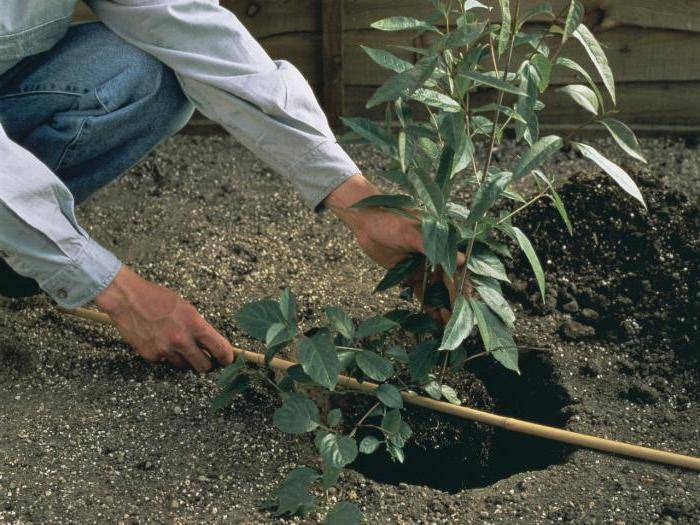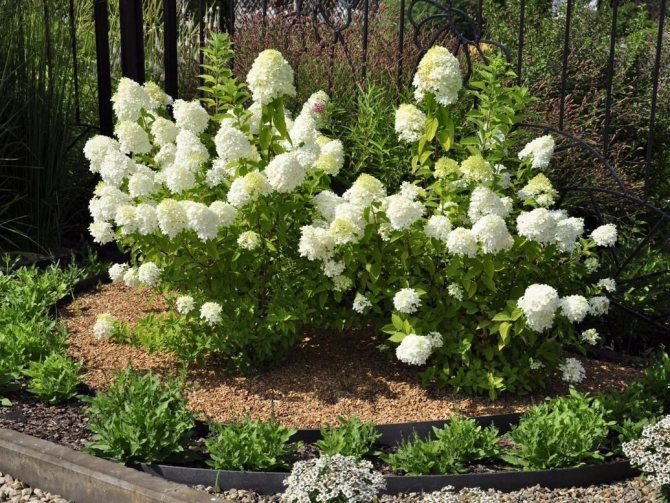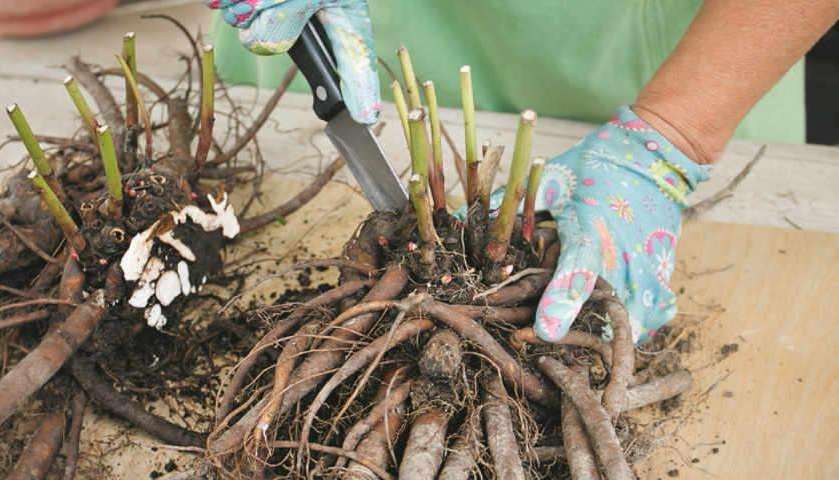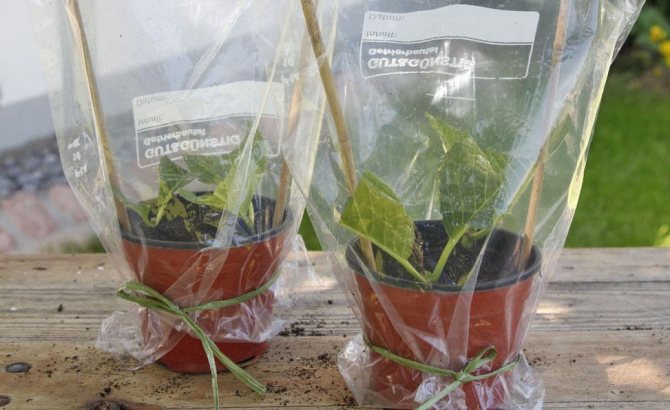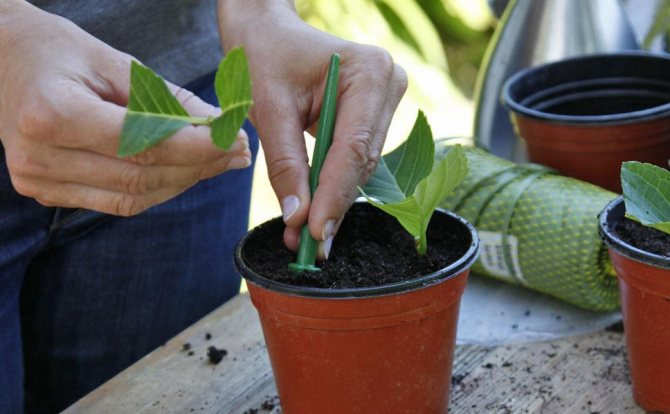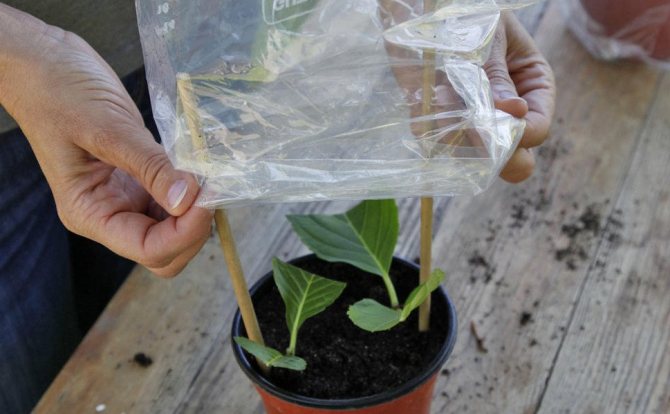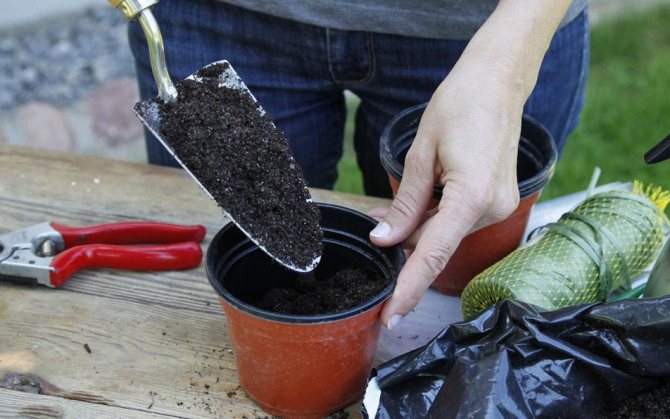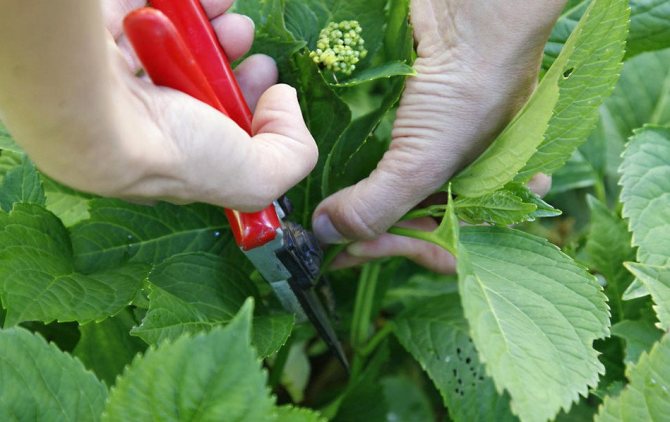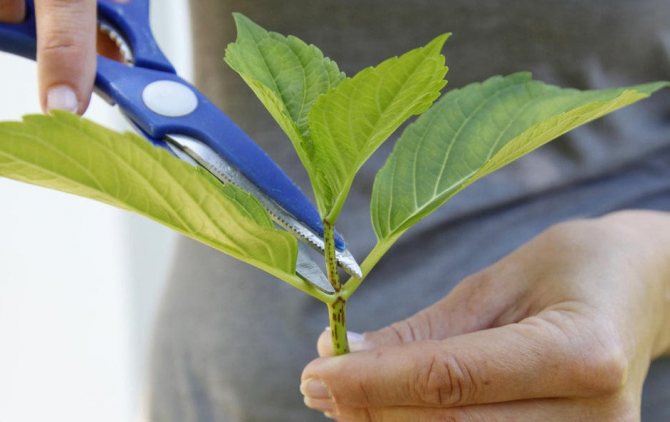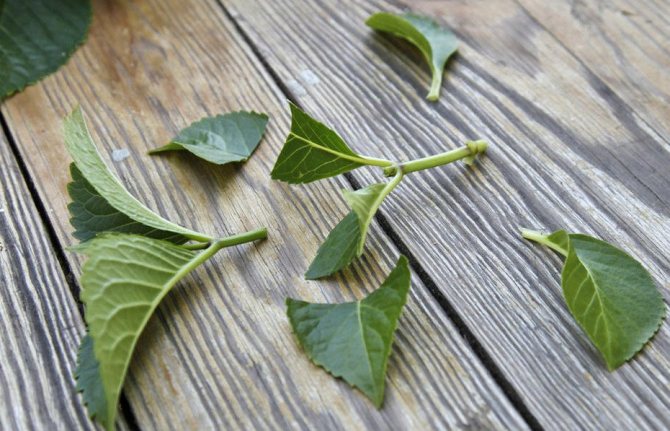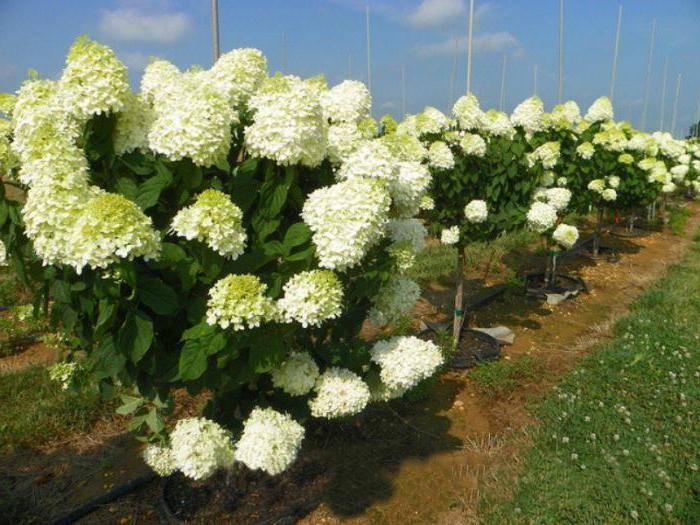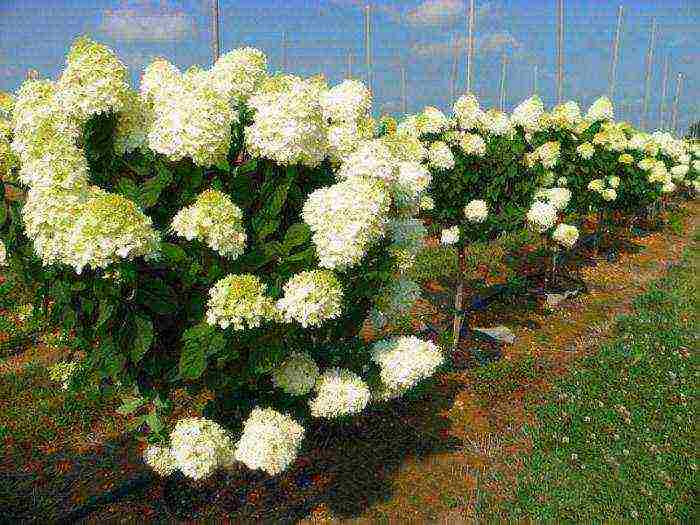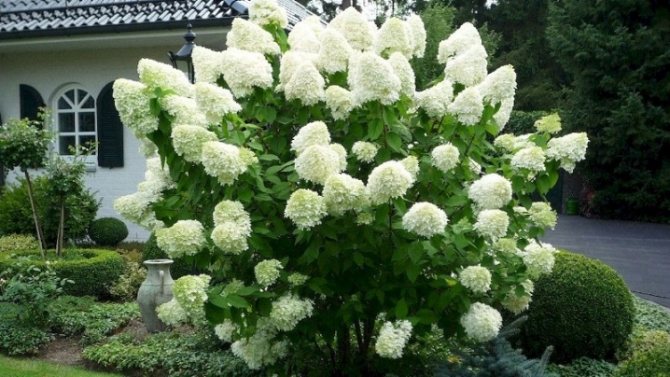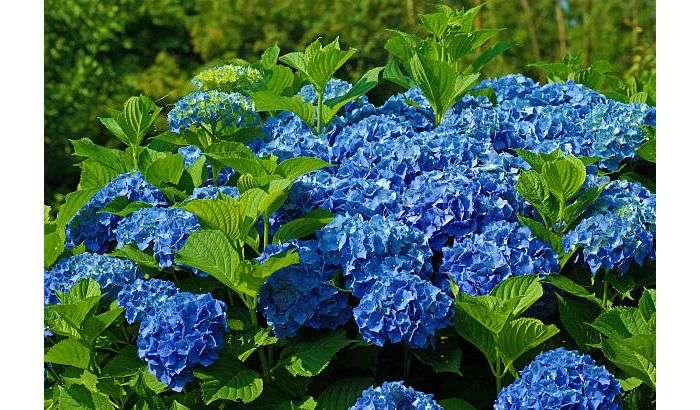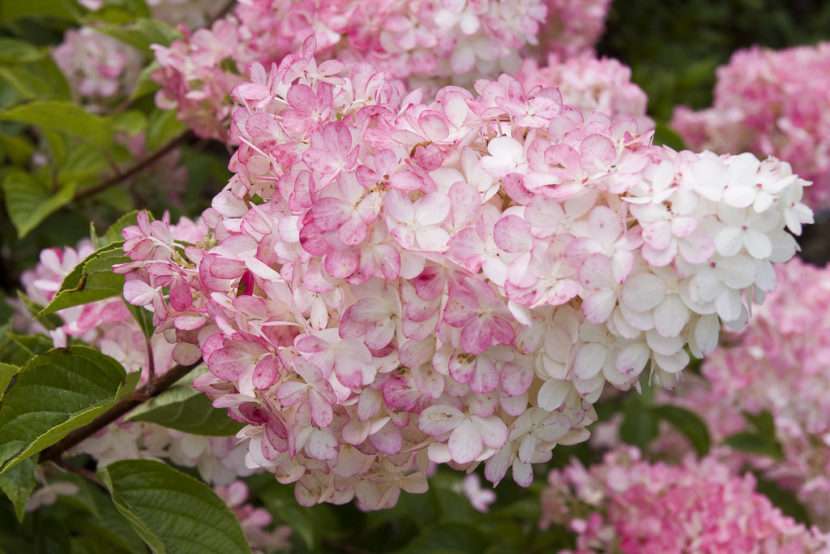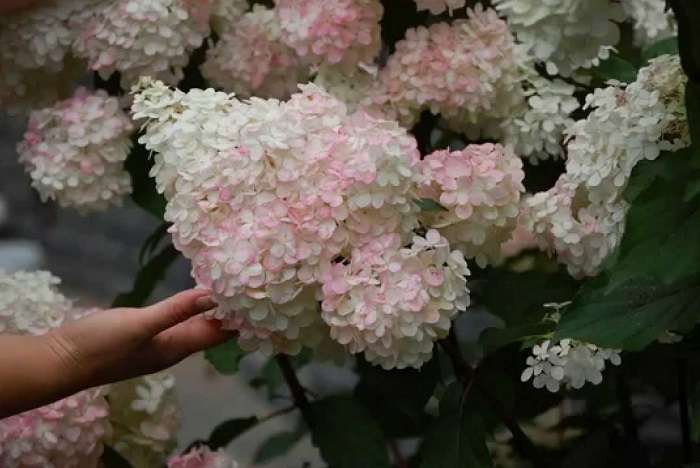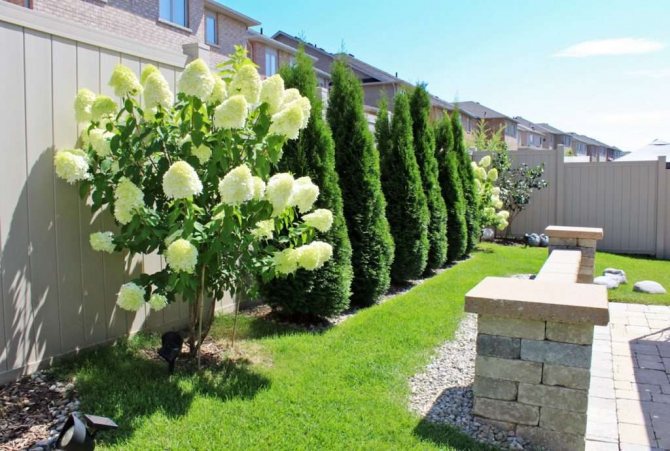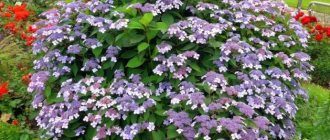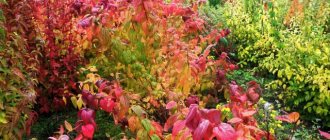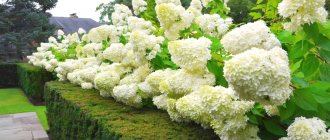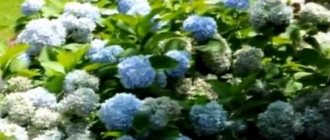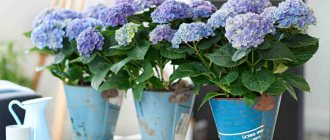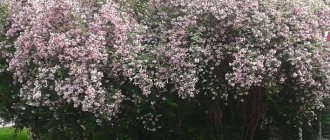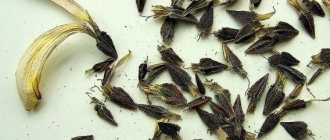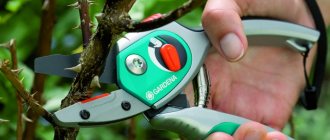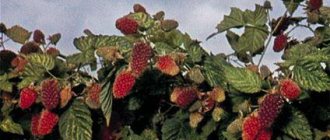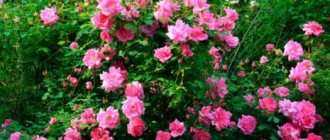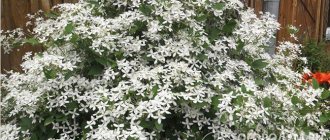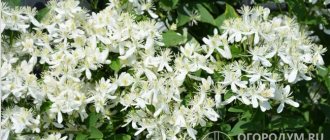Hydrangea Polar Bear is one of the most winter-hardy species of this plant. She is able to survive cold down to -40 ° C. This is considered the most important plus for growing a plant in Russia. Many summer residents fell in love with the variety precisely for these qualities. But hydrangea Polar Beer is famous not only for its high frost resistance. This variety has a number of advantages, which will be described in detail below.
Features of the view
The variety of panicle hydrangea Polar Beer is produced by selection of two famous panicle varieties:
Now, each of these varieties is cheap, as a more sophisticated look has appeared.
According to the description, each of these varieties separately has a number of significant disadvantages. For example, the first species is famous for its large chic flowers, but it has rather thin spreading branches, which further leads to fragility, especially after rainy weather. Therefore, the plant needs constant support. The second variety, on the contrary, has small and not very attractive flowers, but is famous for its high frost resistance. Plus, the buds of this type of plant during the flowering period are able to change color from bright pistachio to pale pink.
Thanks to selection, all the advantages of the varieties are combined in the Polar Beer panicle hydrangea. They made this species not only frost-resistant, with rather large spectacular flowers, the inflorescences of which reach up to 40 cm, but also undemanding to care for. Considering all the advantages of this variety, the Polar Beer hydrangea is often used in landscape design. And the color change during the entire flowering from rich pistachio to white, cream and pinkish, makes the garden design beautiful and graceful.
Hydrangea Polar Beer
The flowering season of the Polar Bear hydrangea begins approximately in early July and ends in late autumn. It can grow up to 180 cm in height. Due to the even distribution of the flowers throughout the bush, this makes the plant more fluffy, which gives the impression of a uniform bouquet. Quite large flowers, exceeding 3 cm in diameter, spread a stunning aroma that can turn anyone's head.
"Polar Bear": description
This variety became known to a wide range of flower growers in 2013. Holland breeders, who crossed the Limelight and Grandiflora varieties, were able to achieve an amazing result - a unique subspecies appeared that can decorate any garden, backyard, square or park.
Hydrangea paniculata "polar bear" is a shrub or tree, no more than one and a half meters high. The crown is almost the same size. It is a compact and spectacular structure, characterized by airiness, which is given to it by huge dense conical inflorescences. They are the peculiarity of the variety.
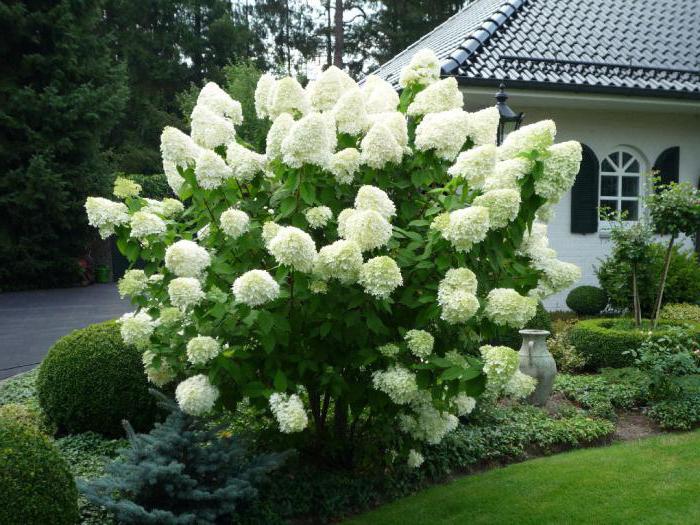
Inflorescences up to forty centimeters long (more often thirty centimeters are found) are located on strong stems. They evenly cover the bush, forming a fluffy lightweight cap. Initially, the flowers are light pistachio-colored. In an adult plant, they are white, and by the end of flowering they acquire a creamy shade.
Due to the fact that the inflorescences are evenly distributed over the bush, it gives the impression of a huge bouquet planted in the ground, like in a flowerpot. The flowers of this hydrangea are very large - over three centimeters in diameter.Hydrangea paniculata "polar bear", the photo of which you can see below, begins to bloom a little later than the others - in July, but flowering continues until the first frost.
The elliptical leaves have a rich green color. The variety is unpretentious in care, has a very high frost resistance, the plant easily tolerates frosts down to -40 ° C, in addition, the plant is resistant to many diseases.
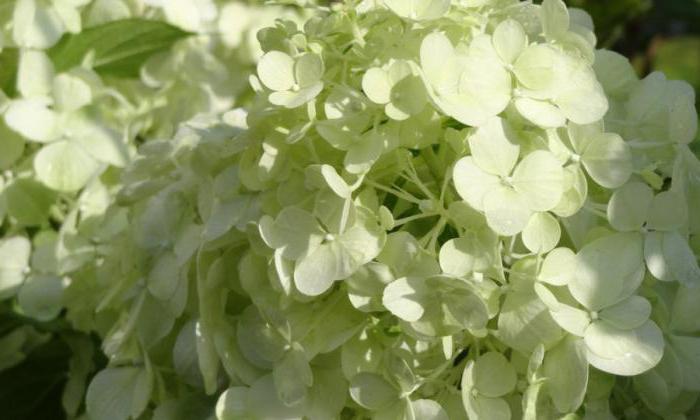

Preparing for winter
"Polar Bear" is a very hardy plant that can withstand cold even down to -40 degrees. Nevertheless, shelter for young seedlings is required. They can be covered with burlap, as well as overlaid with spruce branches.
Adult and old plants do not need shelter, but you still have to mulch the trunk circle. For mulching, you should use dried grass, sawdust, pine needles, peat.
The mulch layer is at least 20 centimeters.
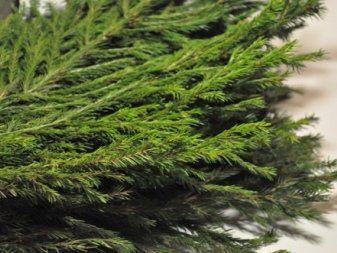

Planting a plant
Hydrangea "polar bear", a photo of which is increasingly seen in floriculture publications, can be planted in autumn or early spring. Autumn planting will require additional work from the owner - shelter for the winter.
Hydrangea "polar bear" feels comfortable in areas that are sufficiently well lit, which are exposed to direct sunlight in the morning and illuminate the area for at least six hours. It is important to protect the plant from drafts, since sap flow begins in early spring, when winds and night frosts are quite frequent.
Before planting, it is necessary to prepare a pit measuring 40 x 50 x 50 cm. As a rule, planting takes two days. On the first day, you should dig a hole and pour three buckets of water into it. The workpiece is left in this state until morning. It is very important for the "polar bear" that the soil is well saturated with moisture.
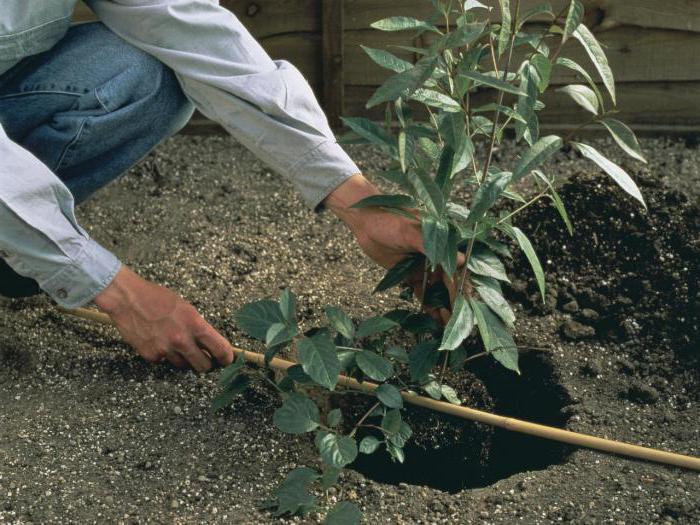

Now fertilizer must be applied to the pit. Mix equal amounts of fertile soil with peat. Mix the sand and humus separately. Both compositions should be thoroughly mixed in a 2: 1 ratio. Superphosphate, potassium sulfate and urea are added to the resulting mixture. The composition is ready and it only remains to bring it into the pit almost to the top, leaving no more than fifteen centimeters.
Place a seedling in the resulting soil, carefully spreading the roots, and sprinkle them with earth left after digging a hole. Hydrangea "polar bear" needs replanting only if the soil and the place for landing were initially chosen incorrectly. In the fall, the planted hydrangea must be covered.
Fertilizer
It is necessary to feed hydrangea in 4 stages:
- In the spring, top dressing during planting;
- At the end of the spring, during the appearance of buds, specialized mixtures with the presence of potassium, urea, superphosphate are used for fertilization. A couple of weeks after the first feeding, it is necessary to fertilize the soil again for better flowering.
- In July, it is necessary to use complex fertilizers together with abundant soil moisture;
- In the late autumn period, when preparing hydrangeas for wintering, specialized fertilizer mixtures are used.
Important! In the period from the end of May to the beginning of June, a special feeding is required for a better formation of inflorescences.
To prepare the fertilizer, you must mix the following ingredients in 10 liters of water:
- superphosphate - 20 g;
- potassium nitrate - 10 g;
- ammonium nitrate - 10 g.
Also, soil enrichment can be done using 10 liters of slurry mixed with 1 kg of mineral fertilizers.
Throughout the summer period, top dressing with the following composition per 2 m² is desirable:
- 160 g - superphosphate;
- 80 g - sulfuric potassium.
This hydrangea variety prefers a variety of fertilizers.
Care
Despite the fact that the polar bear hydrangea is an unpretentious plant to care for, certain rules must be followed.For active growth and development of the plant, the following measures should be taken:
- Mulching. It is required to protect the roots of the plant from overheating and drying out, since they are located shallow and compact. For this, you can use peat, sawdust, covering materials.
- Watering. Hydrangea is a moisture-loving plant that needs regular watering, since its roots cannot stand drying out. The weekly rate of water is thirty liters per bush. Experienced flower growers recommend adding a little potassium permanganate to the water for irrigation.
- Bush formation, pruning. To prevent hydrangea bushes from thickening, pruning should be carried out annually in the spring. When the branches are too close to each other, it can lead to a decrease in the plant's immunity due to insufficient air and light. In this case, the inflorescences become much smaller, and the bush can infect pests and infections.
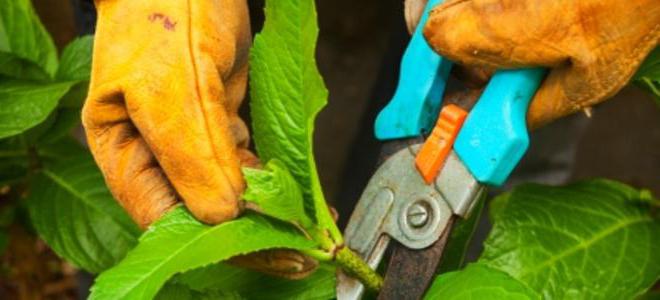

Since this variety is frost-resistant, pruning can be done in early spring or late winter. The strongest 5-10 shoots must be shortened to 3-5 buds. Usually this is two-thirds of the branch, and the remaining branches are removed.
Fight disease
In fact, the Polar Bear hydrangea rarely gets sick. If this does happen, the reasons may be:
- wrong choice of soil and site for planting;
- poor care, excess or lack of fertilizers;
- excess moisture, contributing to the development of the fungus;
- too dense plantations.
One of the most common hydrangea diseases is chlorosis. This insidious ailment is the result of a lack of nutrients in the soil. Depleted soil leads to the fact that the leaves turn very yellow, and the plants become weak. Such drugs as "Antichlorosis" and "Chelate" will help to cure the bushes.
Also, one should not forget about feeding with iron and watering only with settled water.
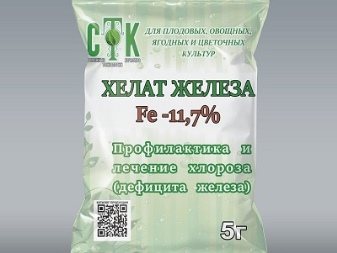

In addition to chlorosis, rot can also affect the hydrangea. With white rot, shoots and foliage become brown, and the roots rot. Fungicides will help well in the treatment. Gray rot is more dangerous for the culture. The stems become watery and may even have holes in them. Gray rot progresses on rainy and humid days, covering an ever larger perimeter of the site. To get rid of the misfortune, diseased parts are removed and burned, healthy plants are sprayed with "Fundazol".
Moreover, panicle hydrangea can also be susceptible to powdery mildew and septoria... Like rot, these diseases are fungal in origin and are difficult to treat. To avoid any dominance of the fungus, it is necessary to prophylactically treat the plants with fungicides.
However, if there is at least some chance with the fungus, then there is hardly anything to help with viral diseases. Ring spot will be one of the main diseases. It can occur because the material was not tested during planting, the plant was cut with an infected pruner, and much more. With spotting, spots form on the leaves, subsequently the foliage curls and dies. Such a plant will not bloom. Unfortunately, it must be destroyed.
As for pests, snails, spider mites and aphids are especially annoying in this case.
- Snails eat absolutely all parts of the plant, adore moisture and shade. Many gardeners collect them by hand, but you can also put bowls with special preparations that will scare away intruders.
- The tick braids the foliage with the finest cobwebs. In the early stages, a soap solution helps against it; in advanced cases, only strong insecticides will be useful.
- Aphids not only suck out all the juices from the hydrangea, they are also a carrier of diseases. Soap solution will also help against such a pest, as well as the "Akarin" and "Commander" products.
Reproduction
Hydrangea can be propagated in several ways, but the most common is cuttings.The shoots left over after pruning the shrub can be used to propagate it:
- the remaining branches must be put in water for three days;
- then cuttings can be cut from them so that each has four internodes;
- treat the lower sections with a growth stimulant;
- plant the cutting in the soil, consisting of peat and sand, in a 1: 1 ratio for two-thirds of its length;
- cover the container with the handle on top with plastic wrap.
Planted cuttings need constant humidity, so it is advisable to store the planting material in a cool room (for example, in the basement). The cuttings are there until the first green shoots appear. This usually happens at the end of summer. After that, they are planted in open ground.
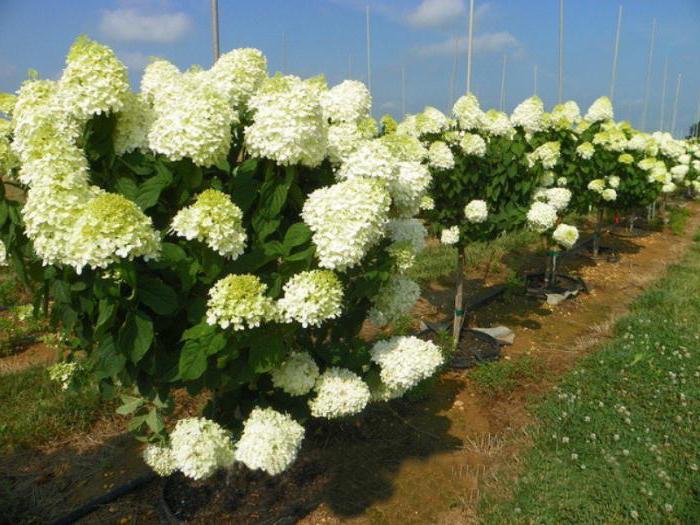

Young seedlings should be protected from frost, since only at the age of three years does hydrangea acquire resistance to low temperatures.
Agrotechnical knowledge
Planting and caring for any plant requires horticultural skills and knowledge of the "requirements" of a representative of the flora.
These nuances are as follows:
- The soil mixture for good growth of any variety of this shrub must be acidified as well as fertile. Hydrangea loves black soil, occasionally prefers loamy and sandy loam soils. If there is a lack of nutrients in the ground, the soil mixture should be fertilized in the hole before planting. Humus or peat are great for this. Subsequently, they use fertilizers of mineral or organic origin. Bear does not like alkaline soils. They should be oxidized. Often they do this with peat or pine needles. It is necessary to choose the land for the hydrangea, the same as for the rhododentrons.
- Watering the bush plentiful. Up to 30 liters of liquid must be given at a time. Watering frequency varies from 2 to 3 times per week. A solution of potassium permanganate will help get rid of rot and fungi. In addition, this is an additional type of feeding for shrubs. Hydrangea, as a special lover of moisture, loves that the topsoil does not dry out. For this purpose and to protect the root system, which lies close to the ground level and is located horizontally, it is mulched. Peat, agrofibre and sawdust work best.
- Seedlings of the White "handsome" should be planted in the spring, but you can also in the fall. In the second case, you should make sure that the seedling has time to give roots, but does not begin to grow. The "bear" should be protected from frost, otherwise it will die. Safe cover is the best escape. In the spring there are only slight frosts, from which the young plant can be easily protected by the gardener. A high level of survival, a large fork of maintained degrees, from low to high temperatures, allows it to be grown in any countries of Europe. After 3-4 years, the seedling will already be a full-fledged bush.
- It is not difficult to take care of the shrub if you initially choose a place for it that is suitable in all respects. Otherwise, you will have to invest 2 times more effort. It takes root well and grows in open ground. This place should be illuminated for at least 6 hours. Hydrangea not only does not welcome drafts, but also suffers from them. It must be borne in mind that the sap flow of this flower is early, and cold winds will simply destroy the shoots that are filled with moisture.
- You should not cut the Bear for the first 2 or even 3 years, not taking into account the removal of frozen branches in winter and weak shoots. Also, before the onset of frost, the inflorescences are removed. Otherwise, not cuttings, but whole branches will break off the snow and ice. Pruning is done in the spring. Strong stems should be left shortened by two-thirds or even up to 3 - 4 buds in an amount of up to 10 pieces. The rest is cut off completely.
- In autumn, the roots should be insulated with a peat mixture with leaves, spruce branches from spruce or pine, grass or straw. Additionally, snow is poured under the bush to keep warm as much as possible. Describing the main points of care helps to create the best conditions for the plant.
Application in landscape design
The magnificent flowers of the polar bear hydrangea are exquisite and solemnly elegant. These qualities are successfully used in landscape design when creating various garden compositions:
- In a very small area, such a bush can easily replace the central tree.
- Lawns, flower beds, tapeworms can be placed around it.
- Coniferous-rhododendron mixborders grown under a bush look great. This part of the garden always looks very fancy.
- An interesting composition can be created in combination with low-growing bushes, creeping plants, perennials.
- A spectacular hydrangea "polar bear", planted along fences or walls.
- Try to diversify the planting with vines: honeysuckle, prince, girlish grapes.
- These flowers look great both in Japanese gardens and sunny English lawns.
How this variety multiplies
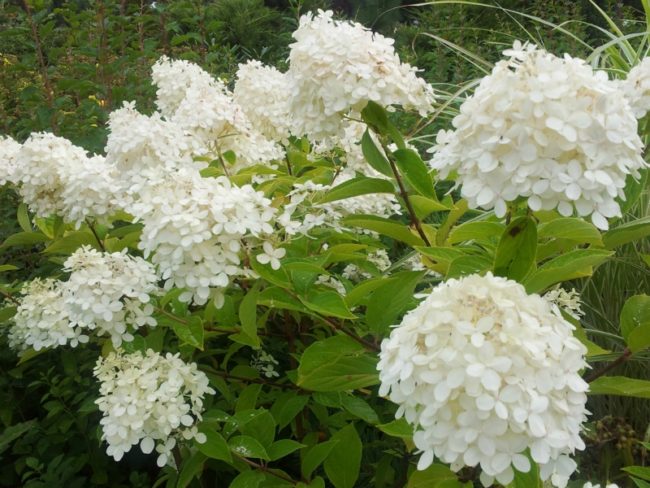

Like any other hydrangea, new "cubs" can be obtained by cuttings or by dividing the bush. Cuttings are often pruned in June. They also actively use the material left over after pruning, which was carried out in the spring. The substrate will be the best soil for the growth of cuttings. Its components will be peat, leafy earth, humus, sand. Creating a greenhouse effect is a must.
The cover should be removed for ventilation. Watering is carried out only as needed, based on the condition of the soil. Hydrangea Polar Bear can be planted as a plant grown by cuttings for a period of 2 years. But the shrub will bloom in another 2 - 3 years.
The division of the plant is carried out in the spring. Digging in the spring from one side of the bush, you should remove some of the roots with shoots and transplant into a separate hole. If "native" land remains on them, it should not be removed. This will only be an additional plus for the adaptation of the bush to be easy and quick.
Hydrangea paniculata "polar bear": reviews
Experienced gardeners and newcomers to floriculture claim that the Polar bear hydrangea was a real discovery for them. Unpretentiousness, resistance to cold weather and most diseases are attractive to many. It is important for flower growers that this magnificent plant does not need very difficult care. Observing the simplest rules, you can grow unusually beautiful inflorescences that will decorate the site. Cut snow-white flowers in a vase look no less impressive.
It is interesting that among the reviews there was not a single one in which any shortcomings of this plant would be noted. On the contrary, experienced gardeners strongly recommend that beginners grow this beautiful flower in their plots.
Varietal characteristics
According to the description, the plant has the following characteristics:
- the hydrangea variety Polar Bir is a shrub whose height is 1.5-2 m with a crown diameter of 1.5 m;
- shoots of culture are straight, strong, durable, not prone to breaking off under the weight of inflorescences;
- bush of dark green color, dense, retains color until the end of the growing season;
- inflorescences are compact, but dense, cone-shaped, 30-40 cm in diameter;
- flowers along the edges are large, sterile, closer to the middle they become smaller, capable of producing seeds;
- at the beginning of flowering, the shade of the inflorescences is delicate pistachio, which gradually transforms first into white, and then into pink;
- flowering period is long, begins in mid-July, lasts until October-early November.
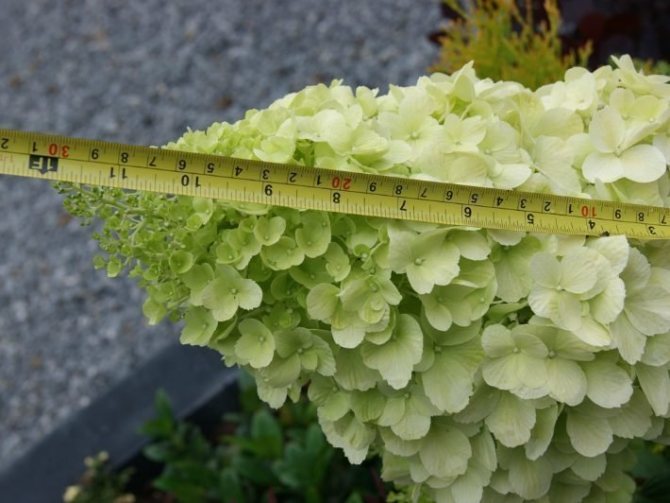

Use cases
Polar bear is a favorite element of landscape design. It is planted in parks, Japanese and English gardens, front gardens. Ornamental shrubs are often made a member of group compositions. It goes well with a variety of flowering perennials, including other types of hydrangeas. Mixborders with conifers and rhododendrons are placed under the culture. Bright flower beds will be appropriate next to the flower.Such plants, placed along the fence or wall of the house, look good, especially if maiden grapes, honeysuckle and other vines are planted between them. A holiday will come to your flower garden with the Polar Bear!


The breeders obtained Paniculata Hydrangea Polar Bear by crossing interesting varieties Limelight and Grandiflora in 2013. She immediately gained popularity among professionals and amateur gardeners. You can find out about its advantages and disadvantages on this page of our site.
The "polar bear" amazes with its magnificence both as a single culture and in a group with other flowering shrubs: peonies, daylilies. Hydrangea paniculata Polar Bear in landscape design can even decorate a composition with conifers. Despite its frost resistance and resistance to high temperatures, it responds well to care and attention. Flowers attract bees with their aroma, so the hydrangea is planted as a honey plant in apiaries.
Small tips from practice
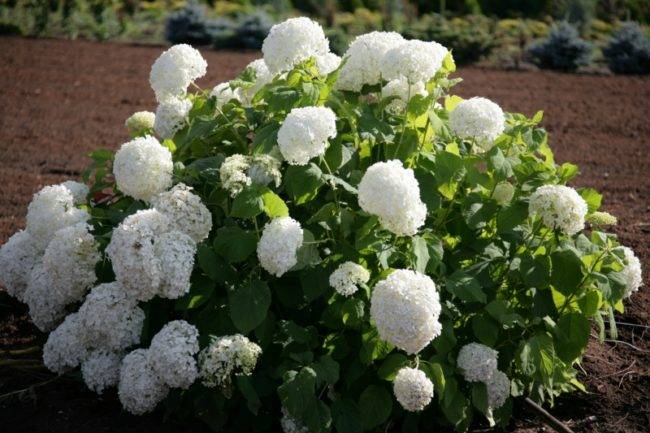

Acquaintance with the Polar Bear hydrangea among gardeners happened relatively recently. You can plant this variety of hydrangea next to rhododendrons. The same soil and similar maintenance conditions make the task for gardeners easier. Optional loosening can be replaced with weeding and mulching. Chips and bark are used. For acidification - needles.
Especially if you use additional cereals and astilbe. That is why annual shoots are cut off every year so that the compact crown can withstand the snow caps on them. Even if the bush of this variety is frozen in winter, after one season it is restored, which is very pleasing to gardeners. And flower clusters appear in biennial shrubs.
Hydrangea polar bear planting and grooming outdoors
How to propagate and prune a hydrangea
The culture is propagated by cuttings, layering, dividing the rhizome, seeds.
Cuttings
For cuttings, medium-sized annual shoots are chosen that cannot be broken when bent. You can use those that remain after the formative pruning of the bushes. The rooting of mature and thick branches is much worse. In mid-summer, cuttings can be placed in a moist substrate with slightly acidic pH values. It includes: coarse sand (1 part), peat (2 parts). To retain moisture in the substrate, sphagnum moss serves as a coating.
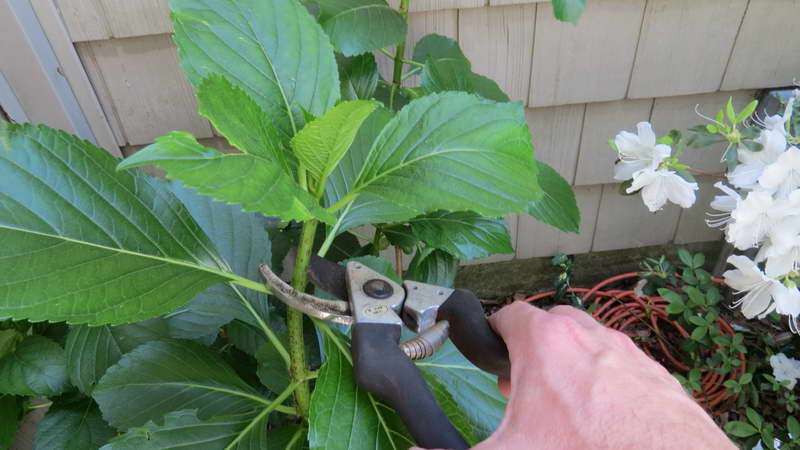

But more often they use a different breeding method:
- branches for cuttings are placed in water for 3 days;
- cuttings are cut, leaving 4 internodes on each;
- the bottom slices are treated with a growth stimulant;
- cuttings are planted in a moistened substrate of peat and sand for 2/3 of the length;
- a box with seedlings is covered with plastic wrap.
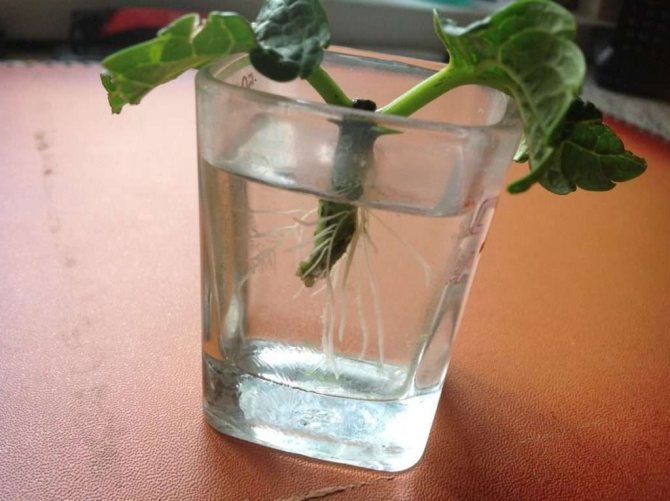

Caring for the Polar Bear panicle hydrangea in the propagation phase consists in constant moistening of the substrate and daily short airing so that the cuttings do not rot. Keep containers in cool places, such as in the basement, until late summer. As soon as the first green shoots appear, it means that roots have formed on the cuttings. Then they can be planted in open ground.
Young plants are protected from frost for up to 3 years, then they become resistant to low temperatures.
Layers for reproduction
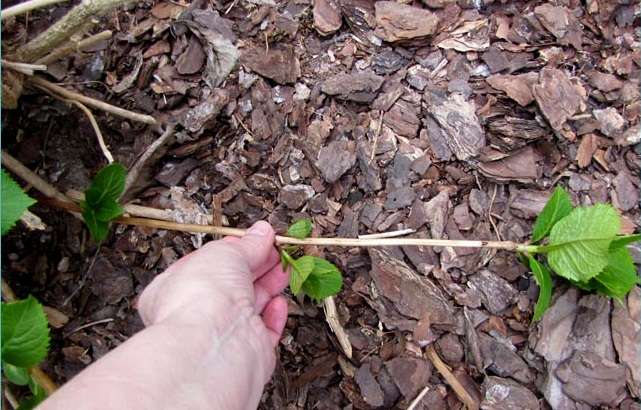

The branches of the shrub are bent to the soil, or rather, to the bottom of the grooves (grooves) made in the ground. There they are fixed, sprinkled with earth, leaving the top of the branch in a horizontal position. This work is done in the spring or in August. When a new bush is formed, after a year it is separated from the mother plant and planted in a permanent place of residence.
Rhizome division
If it becomes necessary to transplant an adult bush, then they dig it out, slightly clean the roots from the soil and divide it into several parts. Each of them must have at least 2-3 growth buds. Sections are treated with a weak solution of potassium permanganate and planted in permanent places. If a little "native" soil remains on the roots, then the new seedling will adapt better and take root faster in a new place.
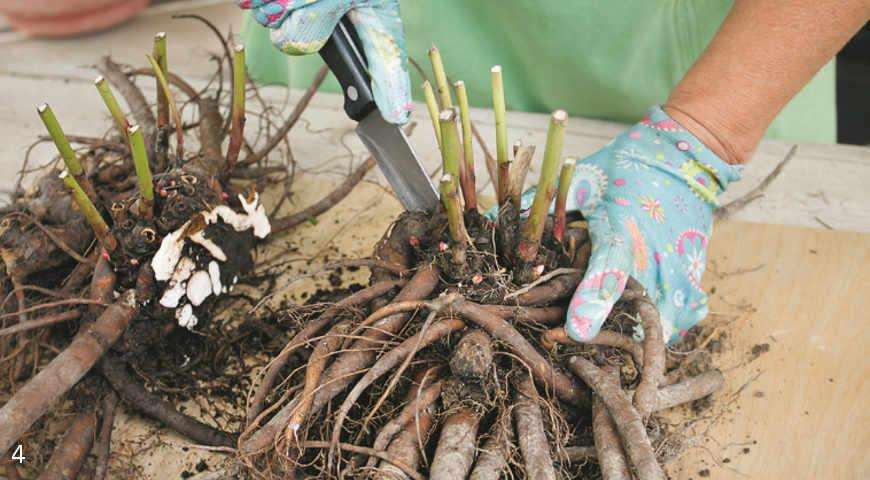

It's important to know. Seed propagation is a difficult process and impractical, since new shoots may not inherit the characteristics of the mother plant, which will lead to the degeneration of the variety.
Where and on what soil to plant hydrangea?
Hydrangea The polar bear takes root best in the south, but it is imperative to provide for a shadow to fall on the landing site. It is extremely rare that hydrangea can bloom in the sun without problems, but only under the condition of increased watering. Young bushes are recommended to be protected from the lunch sun and strong winds. Since hydrangea loves moisture, you should not plant this plant near trees that absorb large quantities of water.
Hydrangea Polar Bear is very demanding not only on soil moisture, but also on its richness. Gardeners recommend using humus, leafy soil, peat and sand for planting in a ratio of 2: 2: 1: 1. This variety does not like lime, this factor must be taken into account when choosing a place for planting. It is best for the soil to be nearly acidic, with a pH of around 5.0.
Hydrangea "polar bear" (reviews of gardeners confirm this) prefers fertile, slightly acidified soils - black soil, loam. Ammonium sulfate and ferrous sulfate can serve as an acidifier. Peat or coniferous litter is suitable from natural materials. When planting in sandy soils, additional feeding is required.
Gardeners reviews
Polar bear has appeared in our gardens recently. But there are already positive reviews about the variety both from specialists and from amateur summer residents. They believe that:
- This hydrangea goes well in plantings with rhodendrons, because they need the same soil.
- If you cut off annual shoots every year, then the compact crown withstands even the first snowfalls, decorating the winter garden along with cereals and astilbe.
- Loosening the soil is not necessary for her. But since the root system of the plant is close to the surface, it is better to replace it with mulching with chips, bark. Also, do not forget about weeding hydrangeas.
- For acidification of the soil, it is better to use needles.
- This hydrangea pleases with large flower brushes of an elegant color for the second year. And when it freezes in winter, it fully recovers during the season.
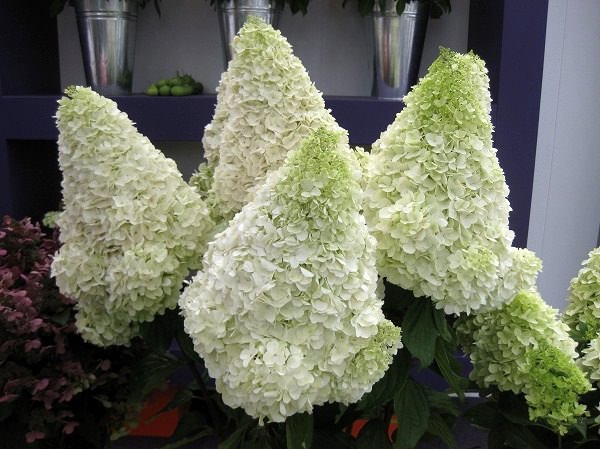

History of creation
A variety with such an unusual name is a Dutch novelty that appeared thanks to the labors of breeders five years ago. Experts obtained it by crossing two well-known varieties of panicle hydrangea: Limelight and Grandiflora. The first is famous for the pistachio color of flowers, which is replaced by a pink hue by autumn, as well as a high level of resistance to low air temperatures. The second type is characterized by the presence of incomparable large inflorescences, but has a significant drawback: the weakness of the shoots, breaking off under the weight of heavy flower caps. The new variety has absorbed the best from its parents and is completely devoid of their weaknesses. In the original, the name of our heroine sounds like Polar bear.
Top dressing
In the northern regions, panicle hydrangea is recommended to be planted in the spring, in the south it can be done in the fall. When planting Polar Bear, it is necessary to maintain a distance of 1 meter between plants. The root system of hydrangeas is shallow, but quite branched.
The size of the pits for young plants should be approximately 30 × 30 × 30 cm. In such holes, you must first pour 1/3 of a bucket of humus with peat into such holes. The root collar does not need to be buried. When all the plants are planted, they need to be watered. It is advisable to use soft rainwater rather than running water. After watering, the bud must be loosened.
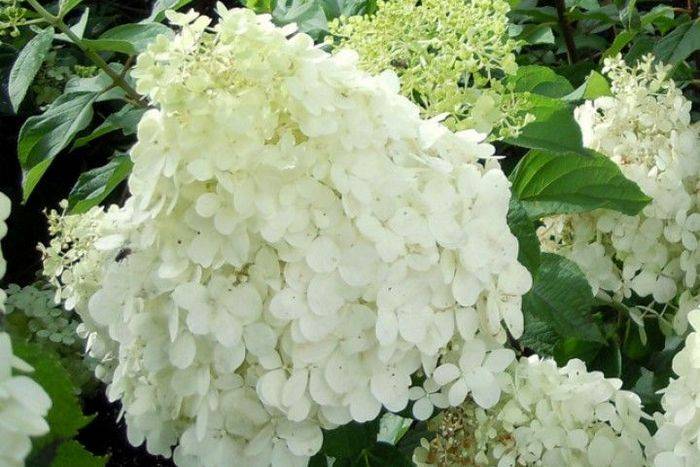

As for feeding, it is carried out in 4 stages:
- 1Spring. Fertilizers are applied at the time of planting.
- 2Late spring, when the buds appear. As fertilizers, you can use special mixtures with potassium, urea and superphosphate.
- 3In the middle of summer. Complex fertilizers should be accompanied by abundant watering.
- 4Late autumn. When the plants begin to prepare for winter, special hydrangea fertilizers should be used.
Particular attention should be paid to feeding in late May - early June. During this period, flower buds of the next year are laid. You can enrich the soil with slurry mixed with mineral fertilizer. The solution should be prepared in a 1:10 ratio. For mineral fertilizers, you can mix 20 g of superphosphate, 10 g of potassium nitrate and 10 g of ammonium nitrate.
In summer, it is recommended to do top dressing at the rate of 80 g of superphosphate and 40 g of sulfuric potassium per 1 m². Hydrangea of this variety responds well to different types of dressings.
For active flowering of hydrangeas, it needs regular feeding. It is performed according to the following scheme:
- organic fertilizers are applied in the spring;
- when buds appear, use mixtures with superphosphate, potassium and urea;
- you will need complex fertilizers in the middle of summer (during this period, fertilizing can be combined with watering the plant);
- during the preparation of the bush for winter, special mineral fertilizers for hydrangeas should be applied.
Dignity
The Polar Bear variety obtained as a result of crossing 2 elite varieties of hydrangeas combines all the positive qualities of parent crops. The most important advantages of an ornamental shrub of this variety are:
- high frost resistance;
- increased immunity of the culture to diseases and harmful insects;
- after winter freezing, panicle hydrangea is able to quickly and fully recover;
- the flowers of the shrub are melliferous, therefore they attract pollinating insects to the garden.
Protection against diseases and pests
The variety, in contrast to the type species, is more resistant to damage by harmful organisms. However, with overflows or too rainy summer, the development of fungal diseases such as powdery mildew and gray rot is possible. In case of manifestations of diseases, it is required to treat the crown with fungicides according to the instructions.
Aphids, spider mites and snails are among the pests on the Polar Bear hydrangea. Gastropod pests will have to be collected by hand. Insecticides of a wide spectrum of action will help get rid of the colonies of the first two harmful insects.
Hydrangea Polar Bear rarely gets sick. This is mainly due to improper care.
Tracheomycotic wilting is a fungal disease that affects the vessels and roots of the bush. Because of this, metabolic disorders occur, the plant withers and dries up. The causative agent is able to live in the remains for many years, so the diseased shrub is destroyed. For prevention purposes, all organic waste must be removed.
Powdery mildew is caused by a fungus. The disease manifests itself as yellow spots on the leaf plate. To cure the plant, it is treated with fungicides - Topaz, Quadris, Tiovit Jet - and the number of watering is reduced.
Rot affects the roots and spreads throughout the tissues of the hydrangea, leading to its death. For treatment, a transplant is required, during which all damaged parts are removed, and the sections are treated with activated carbon. Then use fungicides and reduce watering.
Of the pests, spider mites, thrips, snails, butterflies, scoops, leaf rollers attack hydrangeas. To get rid of them, the flower is treated with insecticides - Biotlin, Iskra, Malathion. If the plant is too badly affected, it is destroyed.
Panicle hydrangea is an ornamental garden plant, popular all over the world, which features inflorescences growing in the form of panicles.On the basis of panicle hydrangea, breeders have bred many new varieties that are distinguished by frost resistance and decorativeness of inflorescences and leaves. One of these frost-resistant varieties is the Polar bear variety, which can withstand frosts down to -40 degrees.
Growing recommendations
This type of panicle hydrangea is partial to sunlight. Given this feature, it is advisable to place the plant in that part of the garden where good illumination is maintained in the morning. In the afternoon, in the area with shrubs, partial shade should reign, which can be arranged artificially. Protect the culture from cold drafts - they provoke the appearance of diseases and slow down the growth of shoots. The plant can be planted both in spring and in autumn. In the second case, it is important to be in time before the start of frost, otherwise the bush may die. In addition, a crop planted in the garden in the fall needs good shelter.
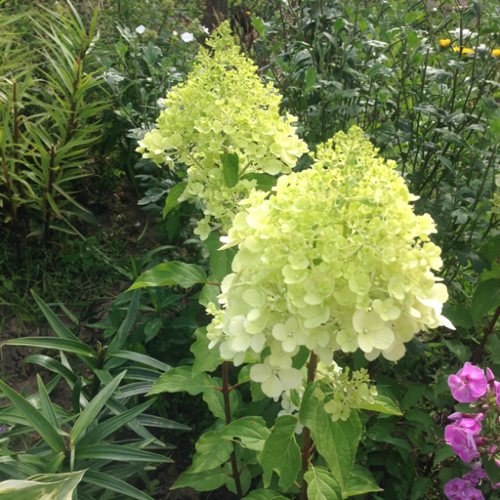

The best soil for Dutch hydrangea is acidified, with a high degree of fertility. If possible, plant the Polar Bear in black soil. The variety is also loyal to sandy loam soil, grows well on loam. To enrich the soil with nutrients, add humus, peat and mineral fertilizers to the hole. The recommended depth of the planting pit is 40-50 cm. To avoid stagnation of moisture at the bottom of the hole, a layer of pebbles or expanded clay is required. You will have to spend two days planting a plant. First, dig a hole and pour a couple of buckets of water into it. The next morning, add the nutrients, mix them with the soil. Plant the crop by spreading the roots and covering them with soil. After that, be sure to water the plant. Remember that hydrangeas cannot tolerate alkaline soils. In addition, plants of this variety must be planted at a sufficient distance from each other in order to provide each of them with normal air circulation and prevent crushing of the inflorescences.

